Adhara is the 22nd brightest star in the night sky and the second brightest star in the constellation of Canis Major. It is a binary star system also called Epsilon Canis Majoris and the brightest known ultraviolet source in the sky.
Key Facts & Summary
- Adhara is a binary star system consisting of Epsilon Canis Majoris A – a bright giant which appears bluish-white in color and is of spectral type B2 II, and a companion star designated Epsilon Canis Majoris B.
- Epsilon Canis Majoris A is almost 14 times bigger than our Sun, with an estimated 12.6 solar masses and 13.9 solar radii.
- It is the brightest-known extreme ultraviolet source in the night sky, exhibiting 38.700 times the sun’s brightness.
- Epsilon Canis Majoris A has an apparent magnitude of 1.50 and an absolute magnitude of – 4.8. Its surface temperatures have been estimated to be around 22.900 K, much hotter than our sun.
- The companion star, Epsilon B, has an absolute magnitude of 1.9 and an apparent magnitude of 7.5.
- Adhara is located around 430 light-years / 132 parsecs away from the Sun.
- Adhara is quite young, it is estimated to be around 22.5 million years old, and it is used in determining the ionization state of the Local Interstellar Cloud.
- Epsilon Canis Majoris B is estimated to be around 250 times fainter than Epsilon Canis Majoris A.
- If ultraviolet wavelengths would be visible to us than Adhara would be the brightest star in the night sky.
- Around 4.7 million years ago, Adhara was only 34 light-years away from us and was the brightest star in the sky with a magnitude of – 3.99.
- This means that Adhara reached the brightest point out of all the stars since then, and further studies concluded that no other star will yet again reach such a visual magnitude for a long time.
- Adhara has a rotational velocity of around 25 kilometers / 15.5 miles per second.
Much to the delight of the northern hemisphere observers, the constellation of Canis Majoris – the Great Dog – hosts both Sirius – the brightest star in the night sky, and Adhara whom once was the brightest star, and reached the climax of visual magnitude that no other star will ever reach again for many years.
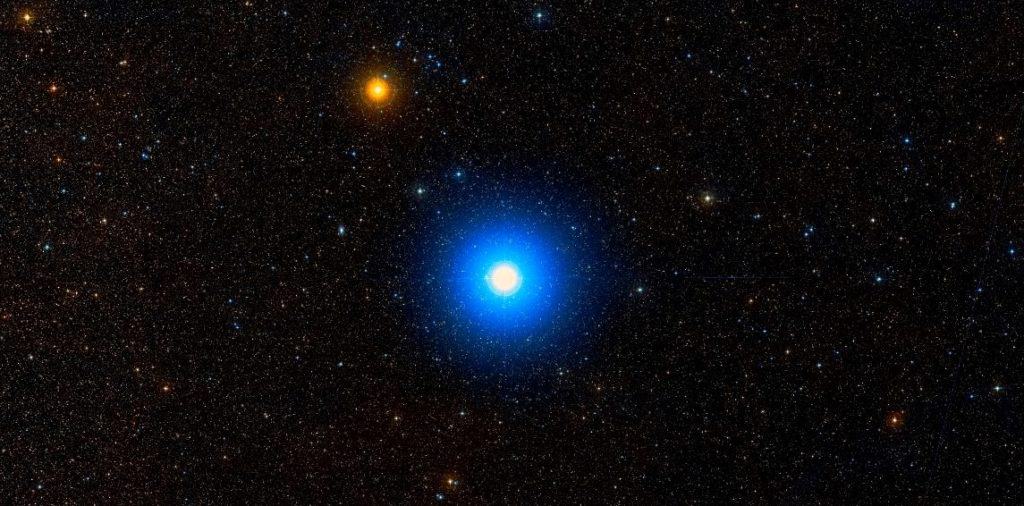
Adhara comes from an Arabic phrase “Al Adhara”, it is sometimes spelled as Adara, and it roughly translates to “the Maidens” of “the Virgins.” Whoever named the star and also its meaning is lost to time sadly.
Formation
The Adhara star system formed roughly 22.5 million years ago. It is uncertain if both stars formed at the same time and then became gravitationally bounded, or they somehow became so through other means. Like all stars, Adhara was formed by either a molecular cloud or nebula, of gas and dust.
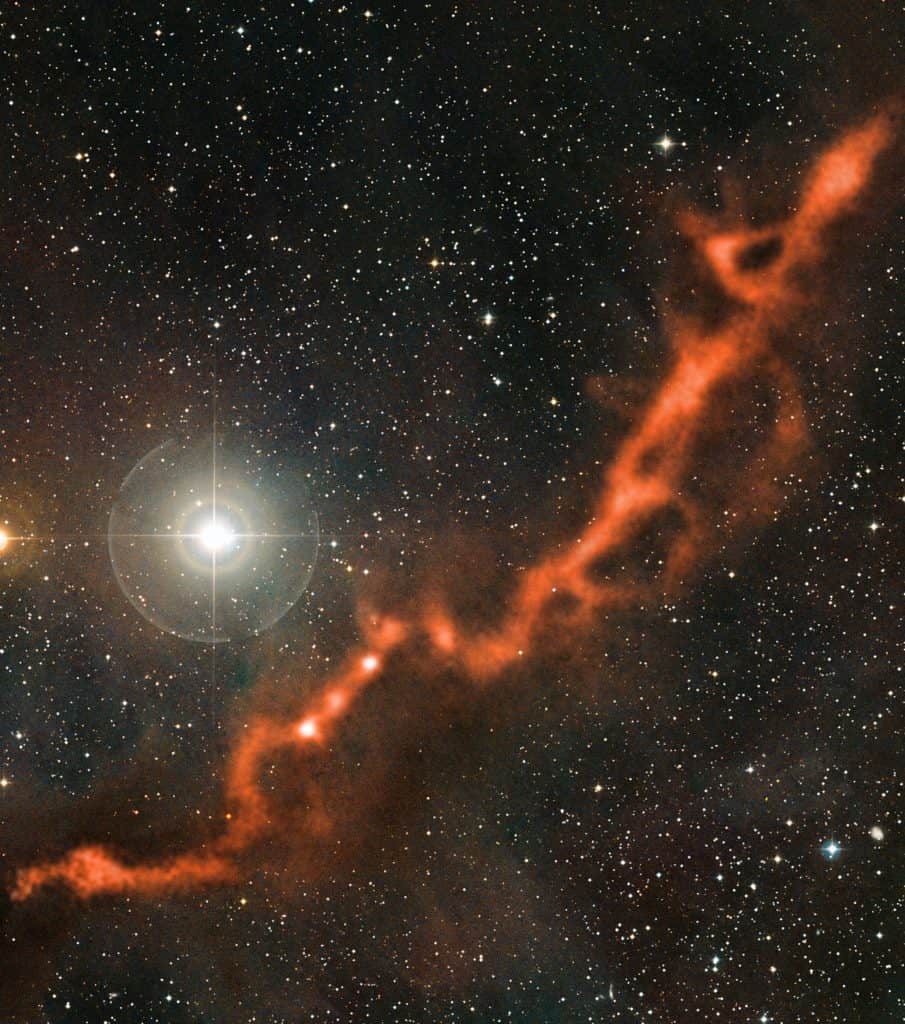
Gravity pulled the swirling gas and dust together and gave birth to the greatest source of ultraviolet wavelengths in the shape of the star, Adhara. It is certain that this star took shape much closer to us than in the distant past.
Around 4.7 million years ago, Adhara was only 34 light-years away from us, and was the brightest star in the sky with the greatest magnitude ever recorded – 3.99. It is quite a young star, much younger than our sun which is around 4.603 billion years old.
Distance, Size, and Mass
Adhara is located around 430 light-years / 132 parsecs away from the Sun. The primary star is almost 14 times bigger than our Sun, with an estimated 12.6 solar masses and 13.9 solar radii. The companion star’s characteristics in regards to size/mass are currently unknown.
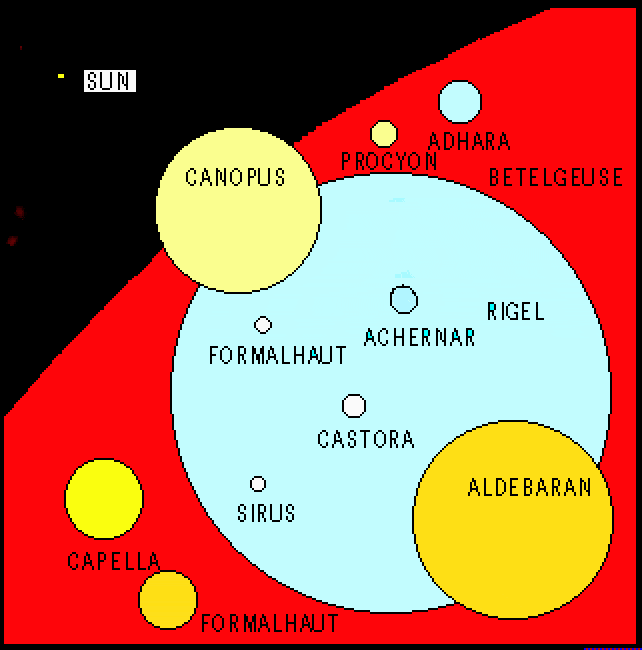
Other Characteristics
Adhara is a binary star system consisting of Epsilon Canis Majoris A – a bright giant which appears bluish-white in color and is of spectral type B2 II, and Epsilon Canis Majoris B, a companion star with little known characteristics.
Epsilon Canis Majoris A has an apparent magnitude of 1.50 and an absolute magnitude of – 4.8. Its surface temperatures have been estimated to be around 22.900 K, around 4 times hotter than our sun. The companion star, Epsilon B, has an absolute magnitude of 1.9 and an apparent magnitude of 7.5.
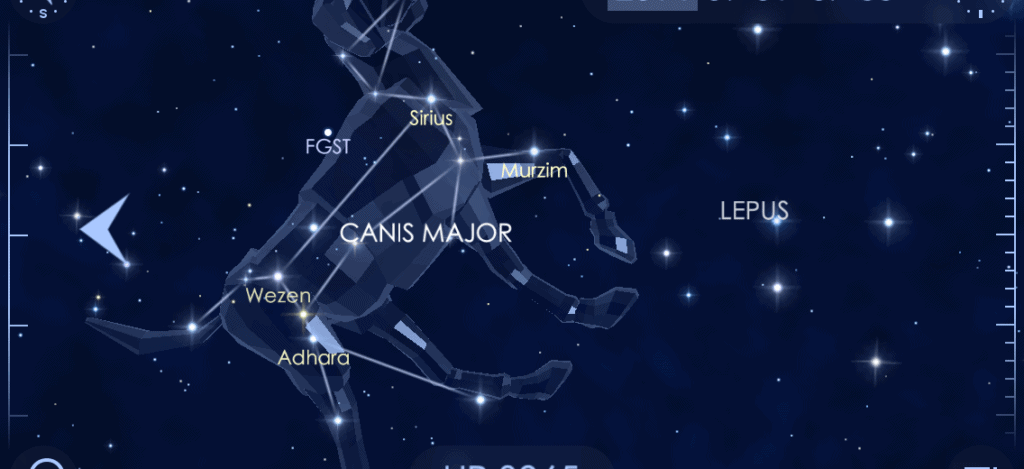
Epsilon Canis Majoris A is the brightest-known extreme ultraviolet source in the night sky, exhibiting 38.700 times the sun’s brightness. If humans could see ultraviolet wavelengths, the star would outshine all the other stars. Epsilon Canis Majoris B is estimated to be around 250 times fainter than Epsilon Canis Majoris A.
Epsilon Canis Majoris A has a rotational velocity of around 25 kilometers / 15.5 miles per second. Epsilon Canis Majoris A is used in determining the ionization state of the Local Interstellar Cloud since it is the strongest source of photons capable of ionizing hydrogen atoms in interstellar gas (at least the strongest source near to us). This interstellar cloud is 30 light-years across and the Sun is traveling through it.
Stellar System
Epsilon Canis Majoris A is separated by about 7.5 arcseconds / 900 AU, by its companion Epsilon Canis Majoris B. Based upon these calculations, the companion star completes one orbit around the primary in at least 7.500 years.
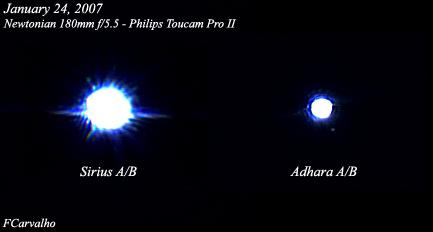
Location
Adhara is located in the constellation of Canis Major. It represents one of the two great dogs who follow Orion, the celestial hunter. Adhara also marks one of the hind legs of Canis Majoris. The stars forming Orion’s belt are actually pointing towards Adhara.
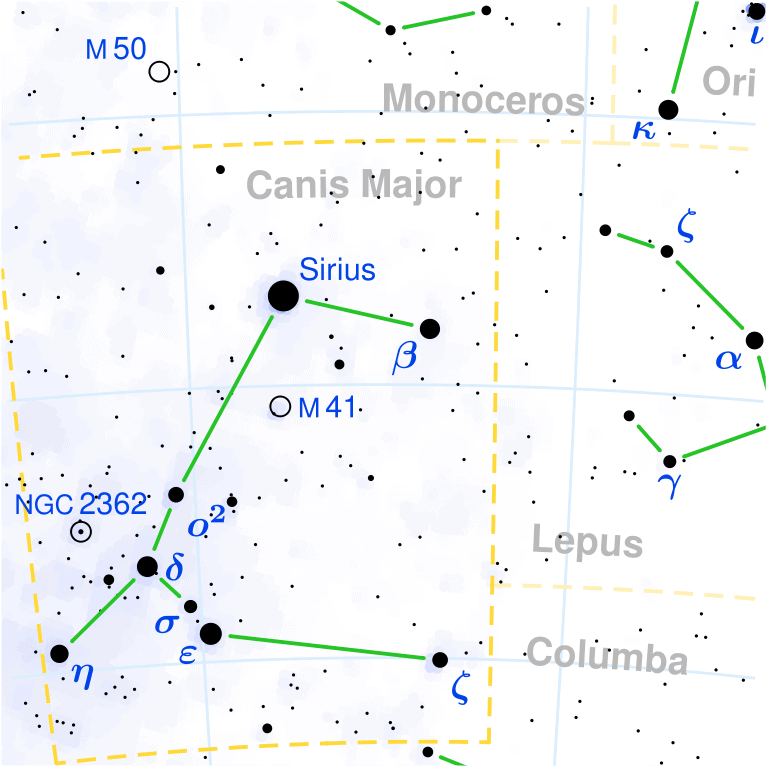
This constellation has other famous stars in it, such as Sirius the brightest star in the night sky, and also VY Canis Majoris, one of the largest known stars. There are many interesting stars and deep-sky objects in this constellation, and the best time to view them is in the month of February. One of the closest dwarf galaxies to Earth is also situated in this constellation – the Canis Major Dwarf.
The Future
Since it is almost 14 times bigger than our sun, Adhara is a likely candidate for a supernova explosion in the future. Though the star reached an impressive -3.99 visual magnitude 4.7 million years ago, this will happen again in around 5 million years from now, when another star will reach this brightess and possibly even surpass it. One of the stars who came close to this statistic was Adhara’s neighbor Mirzam, it had an apparent magnitude of -3.65 around 4 million years ago.
Did you know?
- If Adhara would be placed in Sirius’s position, it would be 15 times brighter than the planet Venus in the night sky.
- Some soures claim that Adhara is on the border between the first and second magnitude. While others claim that it is the faintest first magnitude star, others say that it is the brightest second magnitude star.
- For the Chinese, Adhara was known as the Seventh Star of Bow and Arrow – an asterism formed by Adhara, Wezen, Aludra, Kappa Canis Majoris, c Puppis, Chi Puppis, Omicron Puppis, k Puppis, and Pi Puppis.
- An Egyptian astronomer in the 17th century designated Adhara as the star Aoul al Adzari – meaning “the first of the virgins” in his Calendarium.
- “Aoul al Adzari” – was later translated into Latin as Prima Virginum – the other “virgins” – stars were Wezen, Aludra, and Omnicron Canis Majoris.
- Both Adhara and Sirius are part of the 58 stars selected for navigation. They made it in this list due to their brightness, and because they are easily recognizable.
- The flag of Brazil features 27 stars with each and every one of them symbolizing a Brazilian Federative Unit. Adhara is one of these stars and it represents the state of Tocantins.
Sources:
Image source:
- https://www.star-facts.com/wp-content/uploads/2019/09/Adhara.jpg
- http://cdn.eso.org/images/screen/eso1209eb.jpg
- https://faculty.virginia.edu/rwoclass/astr1230/im/compare_star_sizes-IShort.gif
- https://www.cloudynights.com/uploads/monthly_01_2007/post-19362-14071011915478_thumb.jpg
- http://www.tapsmart.com/wp-content/uploads/2014/09/star-walk-2-plain-1136x520.png
- https://upload.wikimedia.org/wikipedia/commons/thumb/a/af/Canis_Major_constellation_map.svg/600px-Canis_Major_constellation_map.svg.png
